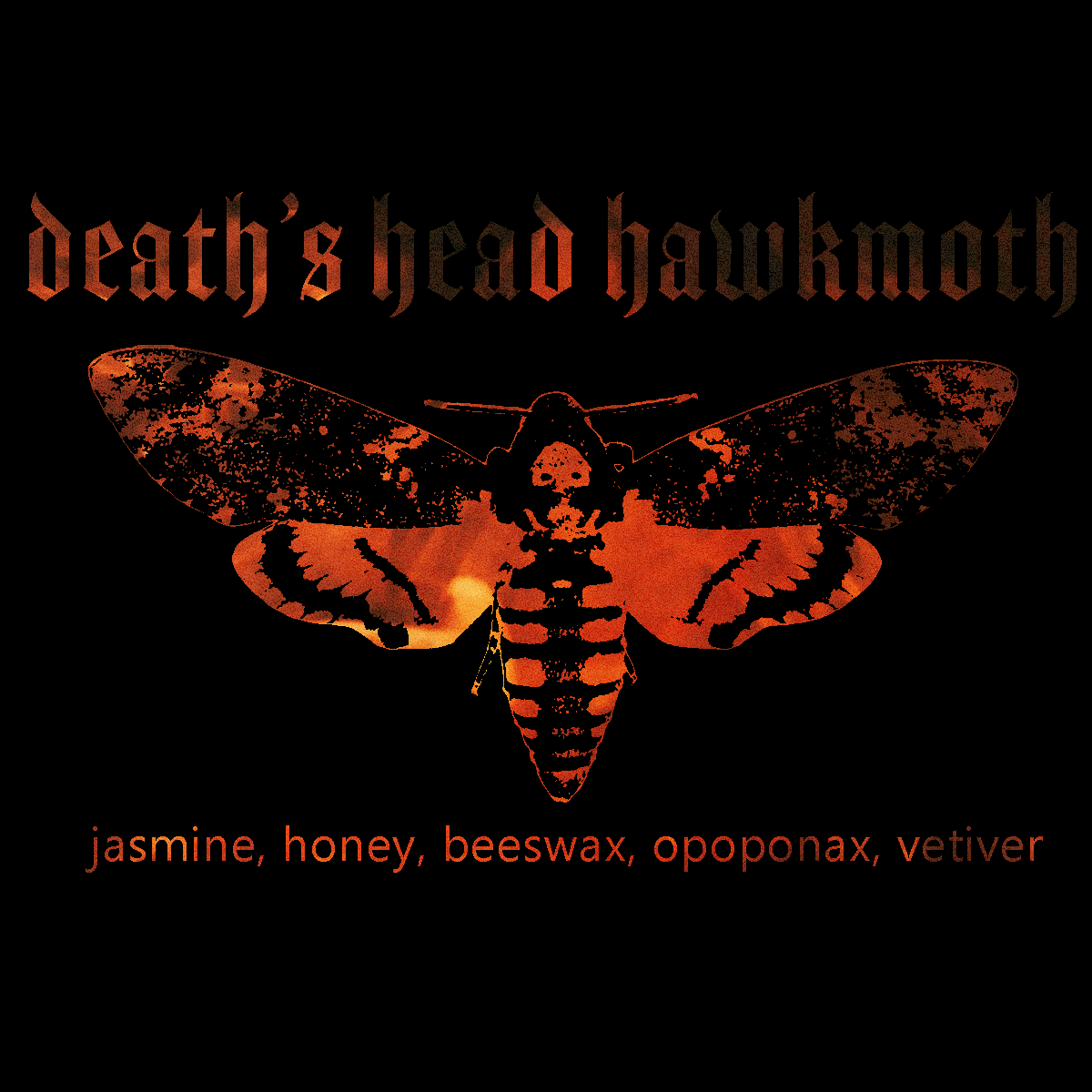Death's-head Hawkmoth
Death's-head Hawkmoth
Share
Couldn't load pickup availability
Notes
honey abs., jasmine grandiflorum sco2, beeswax abs., opoponax ambreine, rum, Indonesian vetiver (non-vegan)
This October and November, we’re celebrating the Death’s-head Hawkmoth. There are three species of moth known by this name - the Acherontia styx, A. lachesis, and A. atropos. These yellow and black moths have historically been considered harbingers of death or ill omen due to their skull-covered thoraces, and their scientific names are suitably derived from Greek myths associated with death. The genus name, Acherontia, is named for the Acheron river in Greece. In Greek myth, the Acheron river facilitated the soul’s passage from the surface into the underworld and across the River Styx, which one of the moth species was named for. The names of the other two species, A. atropos and A. lachesis, refer to two of the Morai, the weavers of fate who determined the length and end of the threads of a mortal’s life.
All this aside, we think they’re incredibly cute, like giant goth bees. Which makes sense, because the Death’s-head Hawkmoth is notorious for their appetite for honey. They prefer potatoes, tomatoes, and other nightshades as host plants for their eggs, but they are also known to use jasmine plants (and other members of the olive family, Oleacea) for laying, and once they’re born, the larva munch on the leaves and flowers. My diet's like 90% potatoes, tomatoes, olives, and jasmine green tea so I really do feel a kinship with these moths.
One of the key odorants in both jasmine and honey is indole. Indole is an important amine in nature, but it’s a very divisive molecule in perfumery. In low amounts, indole contributes a honeyed floralcy and a humid warmth. While many flowers contain indole, including rose and lily of the valley, jasmine has one of the highest concentrations of indole, with some jasmine absolutes containing over 7% - at these concentrations it can remind people of feces or halitosis. This makes sense because indole is produced by bacteria as a metabolite of tryptophan, so it is found naturally in decaying matter and in places where bacteria thrive, like in the human (and honeybee) GI system. We’re not sure if this connection explains the moth’s appetite for both jasmine and honey, but they are notorious for stealing honey from beehives, where they often (but not always) go undetected or unharmed. It’s thought that this may be due to perhaps their coloring or the fatty acids on their bodies - these waxes mimic the smell of beeswax and may protect the moths from from stings if caught.
The jasmine grandiflorum we’ve chosen for this perfume is one of our favorite jasmine materials. It’s a beautiful supercritical fluid extraction that preserves the delicate complexities of the living flower versus harsher extraction methods with gassy top notes like hexane absolutes. The beeswax and honey contribute to the indolic qualities and contribute crystalline facets as well. Together with the opoponax, the honey, beeswax, and jasmine create a vertical accord from the top to the drydown that is buttery, golden and glowing.
Ambreine accords are classic and a little vintage smelling - they’re traditionally based around labdanum and vanilla, but we felt that the buttery and styrene-like opoponax blended more beautifully and naturally with the jasmine. To cut through this richness, we chose Indonesian vetiver for its ashy, smoky, and nutty aspects. A small amount of coffee sco2 allows the vetiver to come forward without overtaking the balance of the perfume. And then we added some rum and a bit of phenolic vanilla for additional darkness,
Description
Death's-head Hawkmoth is October's Moth of the Month. Available as an EdP spray in a 6mL bauble for $30. Free as a gift with purchase on orders over $200.00 - just add it to your cart. Subtotal must equal $200 after any discount codes are applied.
Olfactive Qualities
Olfactive Qualities
Primary scent families:
- floral
Other qualities and aspects:
- caramelized
- alcoholic / boozy
- floral (hedonic or narcotic)
- smoky (woods / vetiver)
- heady
- animalic (ambergris / labdanum / indole)
Gender Expression
Gender Expression
Aesthetic
Aesthetic
- southern gothic
- femme fatale
- academia - dark
- vintage
Allergens & Other Callouts
Allergens & Other Callouts















